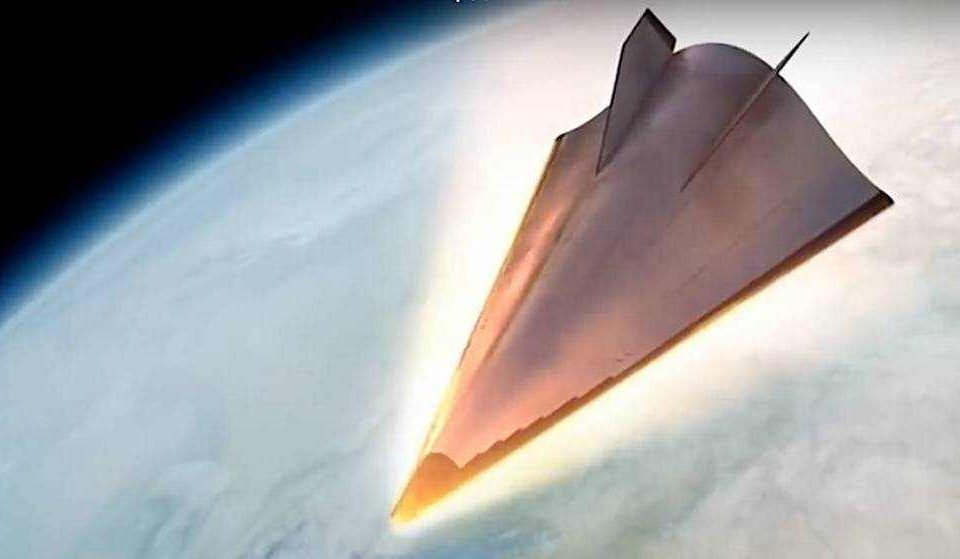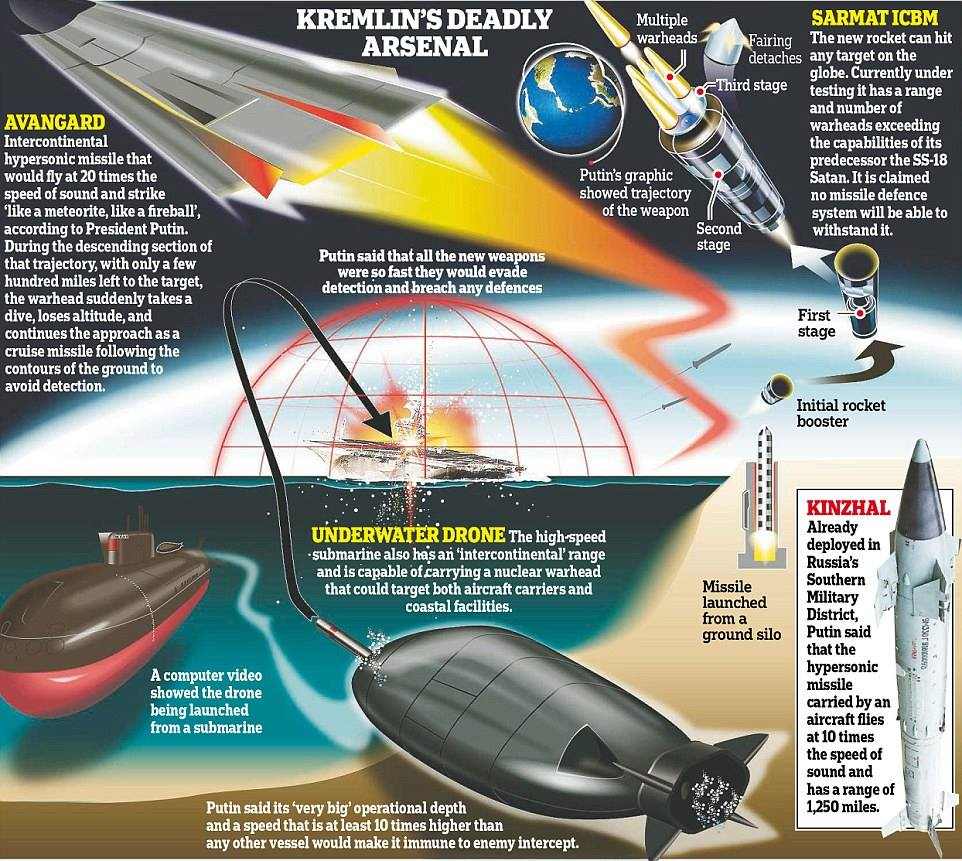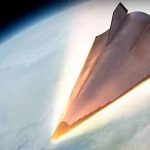Meet Russian Avangard, the world’s fastest nuclear-capable hypersonic missile that’s 20 to 27 times faster than the speed of sound; can hit any target on Earth within an hour

With conflict brewing in Taiwan, the major military powers—China, Russia, and the United States—are taking military technology to the next frontier–outer space. In a never-ending quest to find weapons that will give each country a qualitative military edge over friend and foe alike, the three superpowers, including India, are developing a new type of weapon ultra-fast “hypersonic” missiles that can hit targets anywhere on Earth within an hour.
The term hypersonic means “moving or capable of speed equal to or exceeding five times the speed of sound, usually meaning greater than Mach 5, which is about 6,174 kilometers per hour or more. This speed makes hypersonic potentially much faster than the ballistic and cruise missiles.
Today’s emerging missile technology is all about speed, accuracy, precision, and making it harder for your adversaries to intercept you. Speed is especially critical as it gives the enemy less warning and less time to react.
These new hypersonic missiles have often been depicted as revolutionary new tools of war that are ostensibly faster, less detectable, and harder to intercept than currently deployed long-range ballistic missiles. According to multiple reports, the ability of hypersonic weapons to strike targets with pinpoint precision ranges from “phenomenal” to “terrifying.”
These are two types of hypersonic missiles: the first are hypersonic glide vehicles (HGVs), which leave the Earth’s atmosphere and then plunge back into it, gliding through the upper layers in a shallow, random series of curves and turners, intended to fool an enemy’s radar as to their intended target.
The second type is the hypersonic cruise missile (HCM) which, while not as fast. HCM missiles are designed to fly low but also at extremely high speeds, surprises the enemy, and giving it very little warning and time to react.
While the three major military powers and India are developing the new hypersonic weapon technology, Russia appears to be in the lead.
On March 1, 2018, Russian President Vladimir Putin unveiled six new Russian strategic weapons. One of those weapons is the Avangard nuclear-capable hypersonic missile that’s capable of striking anywhere on the planet and wipe out an area ‘the size of France’ in less than an hour. In his presidential address to the Russia Federal Assembly in Moscow, President Putin said the testing of the weapon was completed and that Avangard had entered serial production.

According to analysts, “the maneuvering capability of the Avangard hypersonic missile makes it difficult to predict its trajectory and gives it the ability to protect itself from the air and ballistic missile defenses by delivering nuclear warheads to targets, for instance, in Europe and the US.” Avangard combines the speed of ballistic missiles and maneuverability of cruise missiles in a single platform.
Tested and delivered as a birthday present to President Vladimir Putin in 2018, Avangard is 20 to 27 times faster than the speed of sound, it can move at roughly 33000 KM per hour. That’s Moscow to NYC in 14 minutes (transatlantic), less in the high atmosphere; probably closer to 6-8 minutes. Kremlin claims that the cutting-edge hypersonic missile can travel at nine times the speed of sound and strike enemies more than 600 miles away.
Russia President Vladimir Putin said:
“Equipping our armed forces, the army, and the navy, with the latest, truly unparalleled weapon systems will certainly ensure the defense capability of our country in the long term.”
According to an open-source intelligence analysis at Janes, Avangard is a pure glide vehicle without an independent propulsion system capable of sharp high speed horizontal, and vertical evasive maneuvers in flight, which Russian officials claim makes it “invulnerable to any missile defense system.”
Avangard is already sending terror and horror to Russian enemies around the world. In a reactionary response to the launch, Pentagon officials say the U.S. has taken concrete action to close the gap with Russia. In his Senate confirmation hearings in the summer of last year, Air Force Gen. John E. Hyten, vice chairman of the Joint Chiefs of Staff, said:
“We have adversaries growing extremely rapidly in this area. We have had fits and starts over the years in that hypersonic technology, which I believe is a mistake.”
As noted online, “Avangard serves not just for deterrence but to warn the Western conceited and self-proclaimed world rulers to wake up and go back to reality, that bullying is not the way to live in peace and harmony.”
The Avangard was flight tested between February 2015 and June 2016 onboard UR-100UTTKh ICBMs launched from Dombarovsky Air Base, when it reached a speed of 11,200 kilometers per hour (7,000 mph; 3,100 m/s). Avangard successfully hit targets at the Kura Missile Test Range, Kamchatka Krai.
According to the Russian Ministry of Defence, Avangard can travel at a speed of over 20 Mach (24,700 km per hour, 15,350 mph), and its composite material hull withstands temperatures of up to 2,000 Celsius.
“It is time for our Western counterparts to accept the new reality. Russian ‘Kinzhal’ (missiles) are on duty, and ‘Avangard’ missiles have entered series production,” RIA Novosti news agency cited a military-diplomatic source as saying.
Below is a video of the public test.

